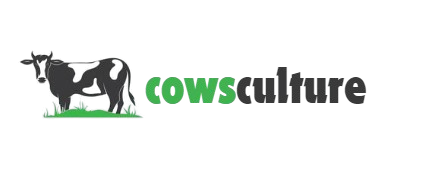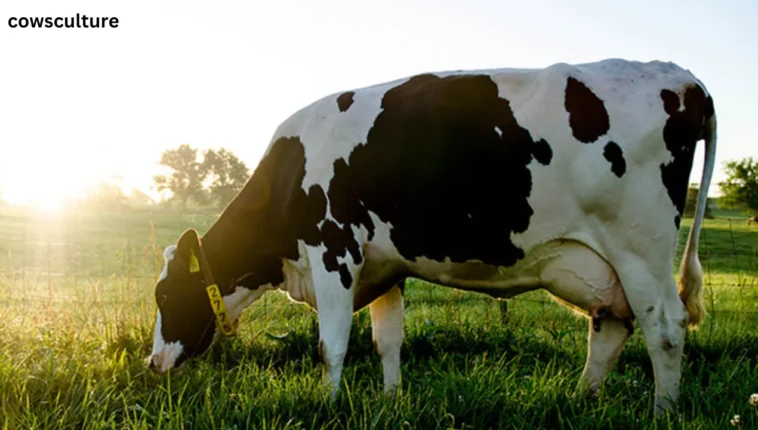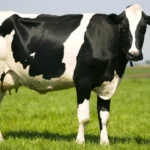Dairy cows are remarkable animals that play a crucial role in the agricultural industry, providing milk and other dairy products. Understanding the anatomy and different parts of a dairy cow is essential for farmers, veterinarians, and anyone interested in the well-being of these animals. This guide outlines the main parts of a dairy cow and their functions.
Head
The head of a dairy cow is vital for its survival and social interactions. Key parts of the head include:
- Muzzle: The soft, fleshy part of the cow’s nose, used for grazing and sniffing. Cows have a strong sense of smell, which helps them find food and detect danger.
- Ears: Cows have mobile ears that can rotate independently, allowing them to hear sounds from different directions.
- Eyes: Positioned on the sides of the head, giving them a wide field of vision to detect predators or movements.
Neck
The neck connects the cow’s head to its body and provides mobility. The neck muscles are strong, aiding in the movement of the head when grazing or drinking water.
Shoulder
Located behind the neck, the shoulder helps support the front part of the cow’s body. It plays a key role in movement, allowing the cow to walk and shift its weight.
Back and Ribs
The back is the long section running from the shoulder to the hips. The ribs protect the cow’s vital organs, including the heart and lungs. The length and size of a cow’s back are often indicators of its size and capacity for producing milk.
Udder
The udder is one of the most important parts of a dairy cow for milk production. It consists of four mammary glands (quarters) and teats from which the milk is extracted. Each teat leads to a milk cistern and duct system, where milk is stored until milking. The udder’s health is crucial, as infections such as mastitis can affect milk production and quality.
Flank
The flank is the area between the ribs and the hind legs. It’s important for the cow’s mobility and houses some internal organs, like the intestines.
Hindquarters
The hindquarters consist of the hips, pelvis, and rear legs. This part is essential for the cow’s locomotion and stability. Key components include:
- Thigh: Muscular part of the rear legs, helping the cow walk, run, or stand.
- Hock: The joint located at the rear leg, similar to a human ankle. It provides flexibility and movement.
- Tail: The cow’s tail helps swat away flies and other insects. It also serves as a communication tool, indicating the cow’s mood.
Legs and Hooves
A cow’s legs support its massive body, allowing it to walk and stand for long periods. Each leg ends in a hoof, which provides balance and protection. Hooves are made of keratin and need regular trimming to prevent overgrowth or infections. Proper leg and hoof health are vital for the cow’s overall mobility and comfort.
Stomach
Dairy cows have a unique digestive system, with a four-chambered stomach designed for processing fibrous plant materials like grass. The four chambers are:
- Rumen: The largest chamber, where fermentation of plant materials begins, aided by bacteria and protozoa.
- Reticulum: Works with the rumen to collect small particles and assist in the fermentation process.
- Omasum: Absorbs water and nutrients from the food.
- Abomasum: Known as the “true stomach,” this chamber digests food using enzymes, similar to human digestion.
Brisket
The brisket is the area at the front of the cow’s chest. It provides support to the cow’s body when it is lying down and helps distribute weight evenly.

Dairy Cow Anatomy
Knowing the various parts of a dairy cow is essential for ensuring their health and productivity. Farmers, veterinarians, and caretakers can use this knowledge to manage cows effectively, identify potential health issues, and improve milk production. Additionally, a deep understanding of cow anatomy helps optimize their comfort, welfare, and overall quality of life.
Conclusion
Dairy cows are complex animals with unique physical structures that support their role in milk production. From the udder to the hooves, each part of a dairy cow has a specific function that contributes to its overall health and productivity. Proper care and attention to each of these parts can lead to a healthier, happier, and more productive dairy herd.
FAQs
1. What are the most important parts of a dairy cow for milk production?
The most important part of a dairy cow for milk production is the udder. It contains four mammary glands (quarters) that produce and store milk. The health of the udder is crucial for the cow’s productivity, and any issues, such as infections (mastitis), can significantly impact milk yield and quality.
2. How many stomachs does a dairy cow have?
A dairy cow has one stomach divided into four chambers: the rumen, reticulum, omasum, and abomasum. These chambers allow cows to digest fibrous plant materials like grass through a process called rumination (or “cud chewing”).
3. What is the function of the cow’s hooves?
The hooves protect the cow’s feet and provide stability and balance when walking or standing. Proper hoof care is essential to prevent overgrowth, infections, or lameness, which can affect the cow’s mobility and overall health.
4. How does the tail of a cow help it?
A cow’s tail is primarily used to swat away flies and other insects that might irritate the cow. It also helps express the cow’s mood or discomfort, which can be observed through its movement.
5. What is the role of the cow’s hock?
The hock is a joint in the rear leg, similar to a human ankle. It provides flexibility and support during movement. Healthy hocks are crucial for the cow’s ability to walk and stand, especially in pasture or barn environments.
6. Why is the brisket area important in dairy cows?
The brisket supports the cow’s body, particularly when lying down. It also helps distribute the cow’s weight and prevent pressure sores when the cow is resting, which is important for its comfort and health.
7. How can you tell if a cow is healthy by looking at its body?
A healthy cow will have a shiny coat, clear eyes, strong hooves, and a healthy udder. Its body condition score (a measure of fat and muscle reserves) should be within a normal range, and its movements should be fluid and without lameness. Regular grazing and cud-chewing indicate good digestion.
8. What is the function of the rumen in a dairy cow?
The rumen is the largest chamber of the cow’s stomach and is responsible for fermenting plant materials. It contains bacteria and other microbes that break down fibrous foods like grass, turning them into nutrients the cow can absorb.
9. How do cows use their ears?
Cows have excellent hearing, and their ears can move independently to detect sounds from different directions. This helps them stay alert to their surroundings, making it easier to detect potential dangers.
10. Why do cows have such large rib cages?
The large rib cage protects vital organs, including the heart and lungs, and allows space for the cow’s complex digestive system. The rib cage also supports the cow’s large body size, which is essential for dairy production.



